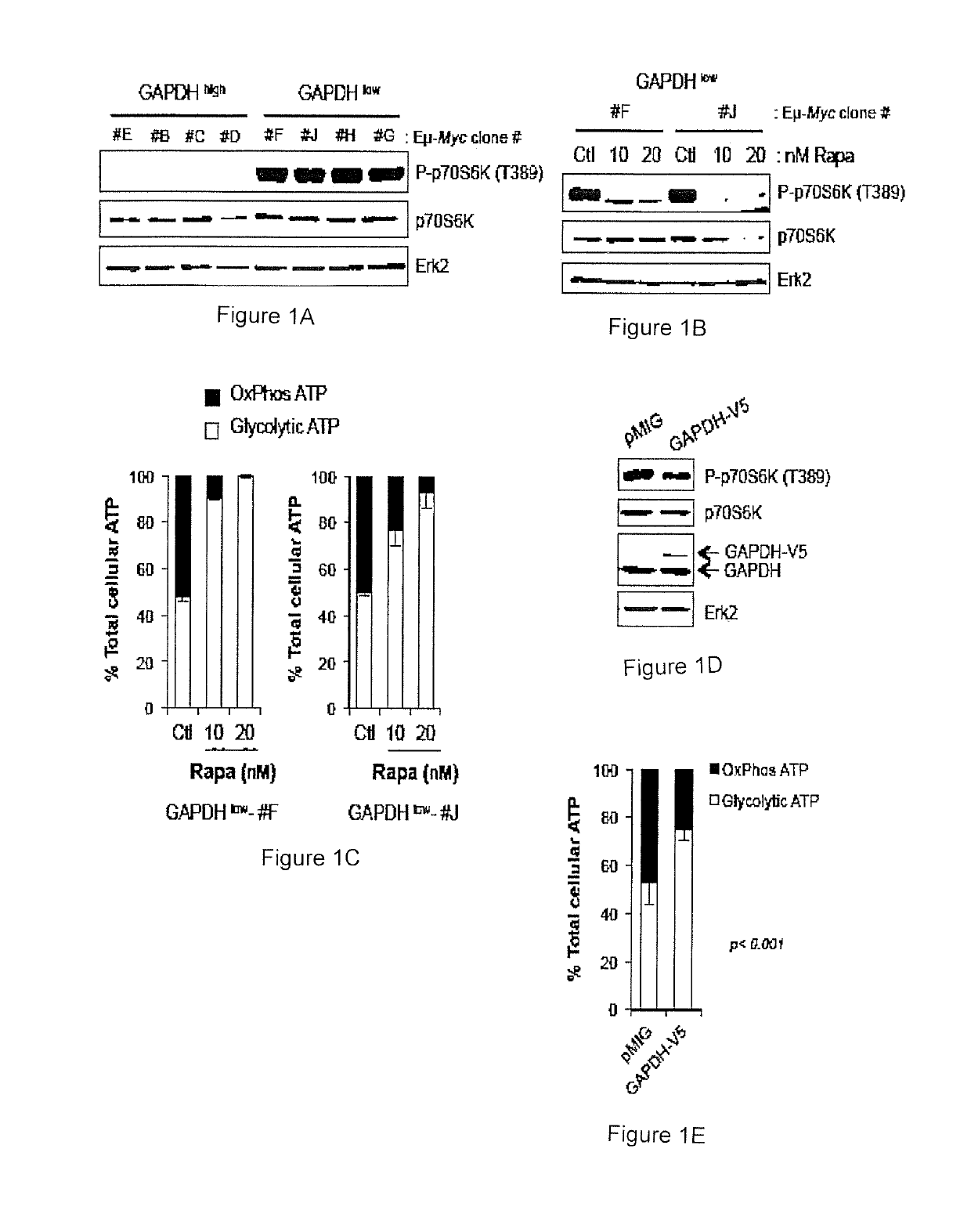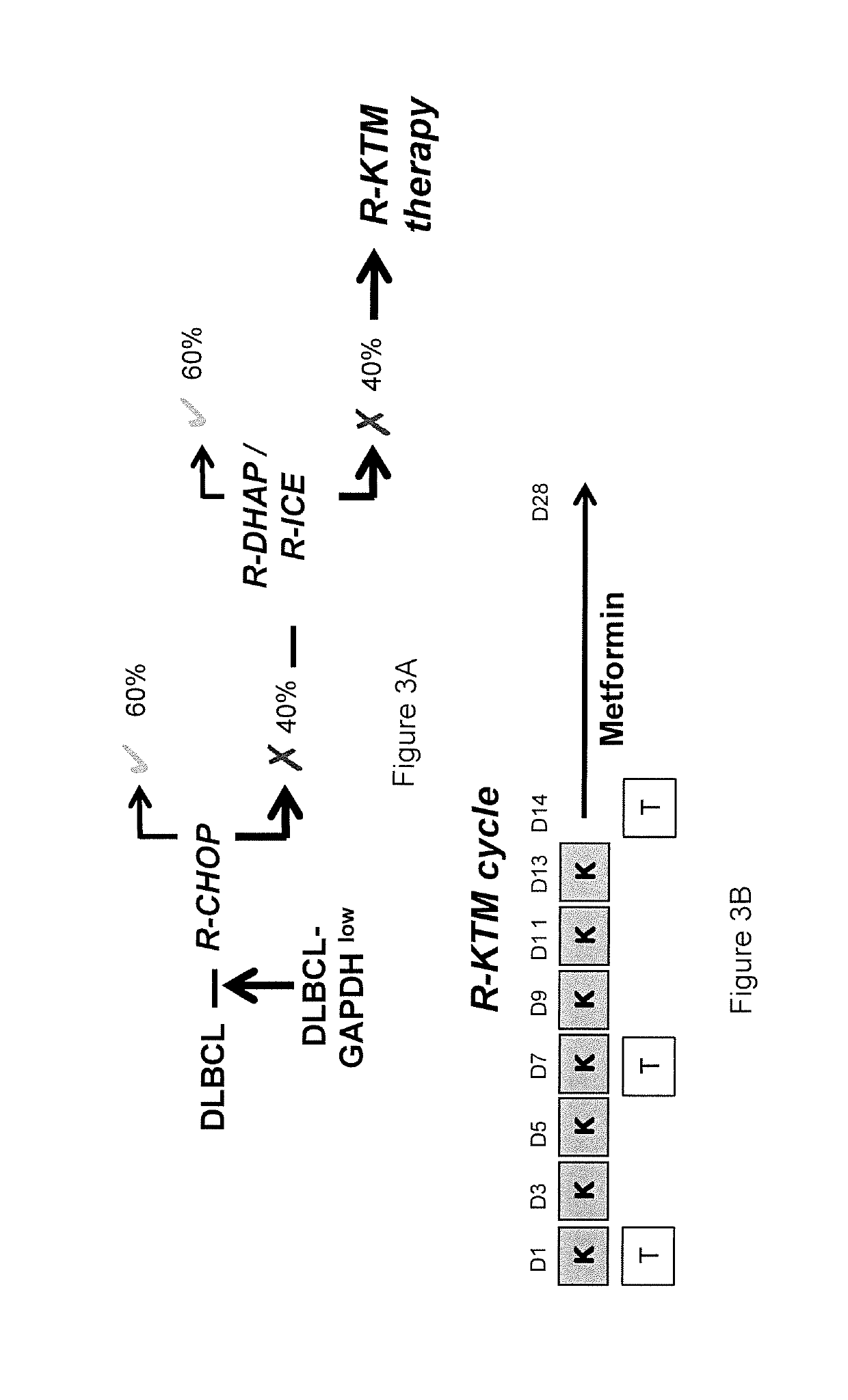METHOD FOR PREDICTING THE RESPONSIVENESS OF A PATIENT TO A TREATMENT WITH mTOR INHIBITORS
- Summary
- Abstract
- Description
- Claims
- Application Information
AI Technical Summary
Benefits of technology
Problems solved by technology
Method used
Image
Examples
example
[0021]In cancer cells, especially upon Myc overexpression, glutamine is avidly consumed and used for both energy generation and as a source of carbon and nitrogen for the de novo biosynthesis. Glutamine and other amino acids support mTORC1 activity, the key sensor of cellular amino acids concentration. Importantly, it was recently demonstrated that GAPDH could decrease mTORC1 activity through its binding to Rheb. We therefore investigated whether GAPDH-dependent control of the mTOR pathway was involved in metabolic reprogramming. Using primary Eμ-Myc lymphoma cells, we observed that Eμ-Myc-GAPDHlow lymphomas presented a higher mTORC1 activity than Et-Myc-GAPDHhigh cells, as determined by the increased phosphorylation on T389 of mTORC1 target p70-S6K (FIG. 1A). In human, 57% of DLBCL-GAPDH® biopsies express the phosphorylated (T389) form of p70S6K, while 91% of DLBCL-GAPDHhigh do not express it, which further support an association between low levels of GAPDH and high mTORC1 activity...
PUM
 Login to View More
Login to View More Abstract
Description
Claims
Application Information
 Login to View More
Login to View More - R&D
- Intellectual Property
- Life Sciences
- Materials
- Tech Scout
- Unparalleled Data Quality
- Higher Quality Content
- 60% Fewer Hallucinations
Browse by: Latest US Patents, China's latest patents, Technical Efficacy Thesaurus, Application Domain, Technology Topic, Popular Technical Reports.
© 2025 PatSnap. All rights reserved.Legal|Privacy policy|Modern Slavery Act Transparency Statement|Sitemap|About US| Contact US: help@patsnap.com



